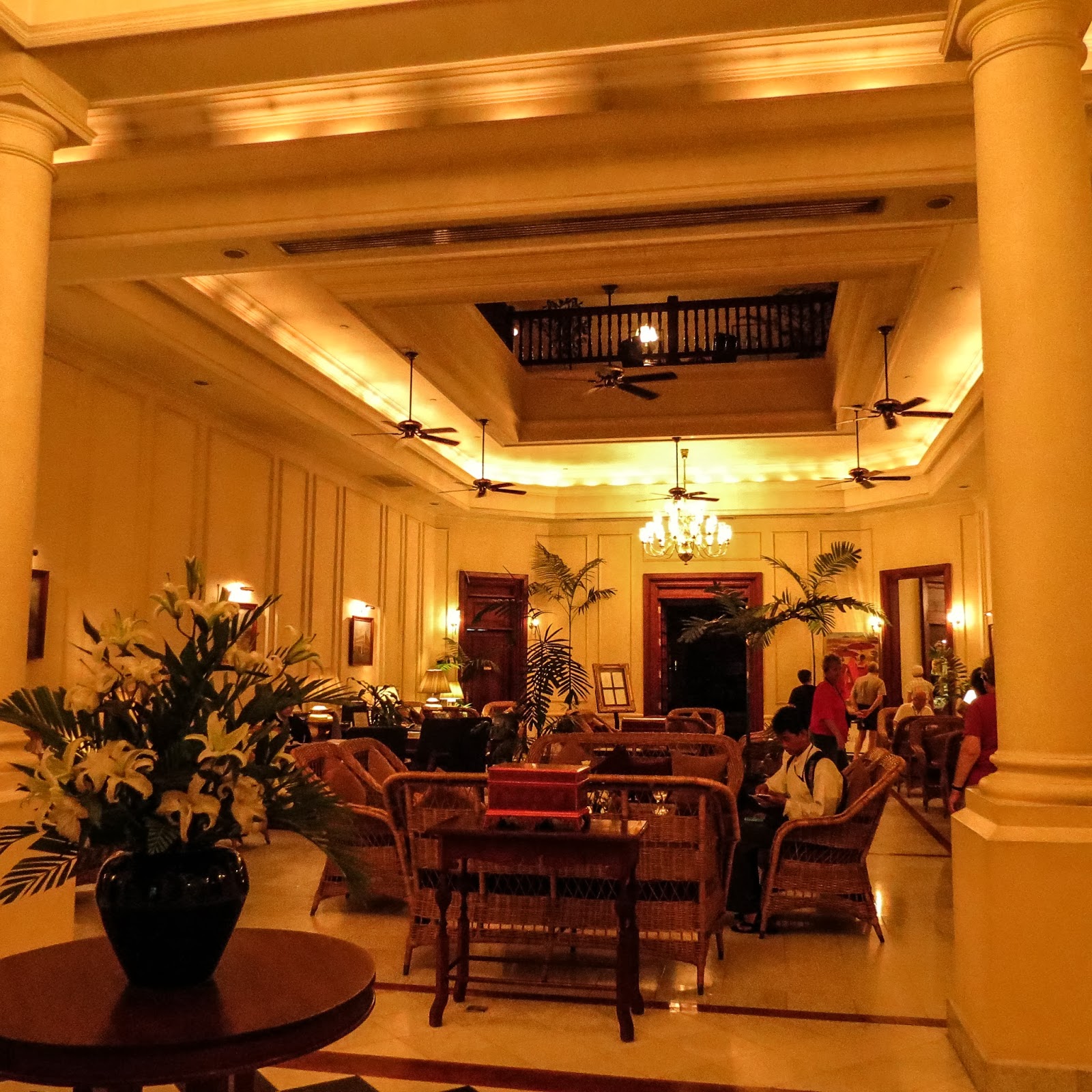Hi, We visited a monastery where both monks and nuns lived. All sons are expecteed to spend at least three months as a monk.
Monks rise early, have a minimal breakfast, and then spend the morning begging for food. When they return the food is pooled and used for the mid day meal. They do not eat again until the next morning.
This little guy is getting water from a cistern.
About 11:30 the boys line up for lunch (above and below)
and then march into the dining hall (above and below).
My guess is that tour groups pay a fee to observe this ritual. I do wonder how the kids feel.
Nuns lived in a different section of the monastery.
We had a free morning which we used to visit the last synagogue in Burma. It is still active with a congregation of about 20. We had to write ahead to arrange for the visit.
Here is an overall view of the sanctuary. The structure in the center, the Bema, is the place from which services are conducted.
At the far end of the sanctuary is the Arc. The Torah scrolls are kept within.
The scrolls are kept covered and are only opened when they are to be read at a service.
The rams horns are called Shofars. They are blown for Rosh Hashonah provided the holiday does not fall on the Sabath.
This was the street outside the Synagogue.
A fish market was one of the many we visited on the trip. However, although fish was the main item, there were many other foods for sale.
One of those food items was crickets.
We stopped at the Strand Hotel, an old colonial building for a quick look.
These statues were for sale in the gift shop,
as was this chess set.
Thanks for looking.
Monks rise early, have a minimal breakfast, and then spend the morning begging for food. When they return the food is pooled and used for the mid day meal. They do not eat again until the next morning.
This little guy is getting water from a cistern.
About 11:30 the boys line up for lunch (above and below)
and then march into the dining hall (above and below).
My guess is that tour groups pay a fee to observe this ritual. I do wonder how the kids feel.
Nuns lived in a different section of the monastery.
We had a free morning which we used to visit the last synagogue in Burma. It is still active with a congregation of about 20. We had to write ahead to arrange for the visit.
Here is an overall view of the sanctuary. The structure in the center, the Bema, is the place from which services are conducted.
At the far end of the sanctuary is the Arc. The Torah scrolls are kept within.
The scrolls are kept covered and are only opened when they are to be read at a service.
The rams horns are called Shofars. They are blown for Rosh Hashonah provided the holiday does not fall on the Sabath.
This was the street outside the Synagogue.
A fish market was one of the many we visited on the trip. However, although fish was the main item, there were many other foods for sale.
One of those food items was crickets.
We stopped at the Strand Hotel, an old colonial building for a quick look.
These statues were for sale in the gift shop,
as was this chess set.
Thanks for looking.





















No comments:
Post a Comment